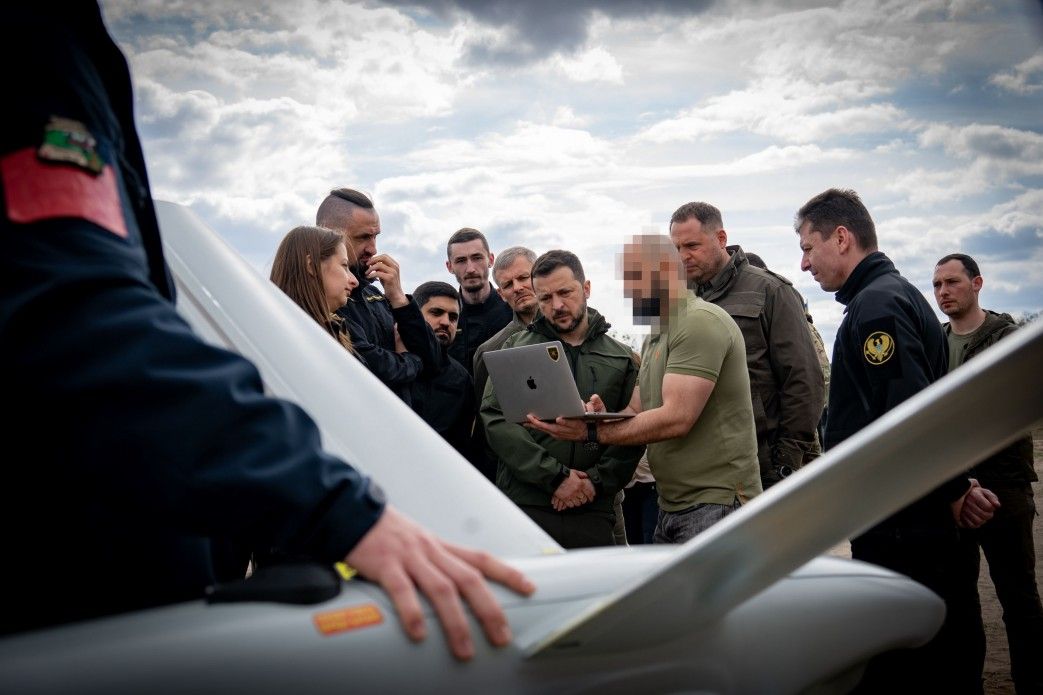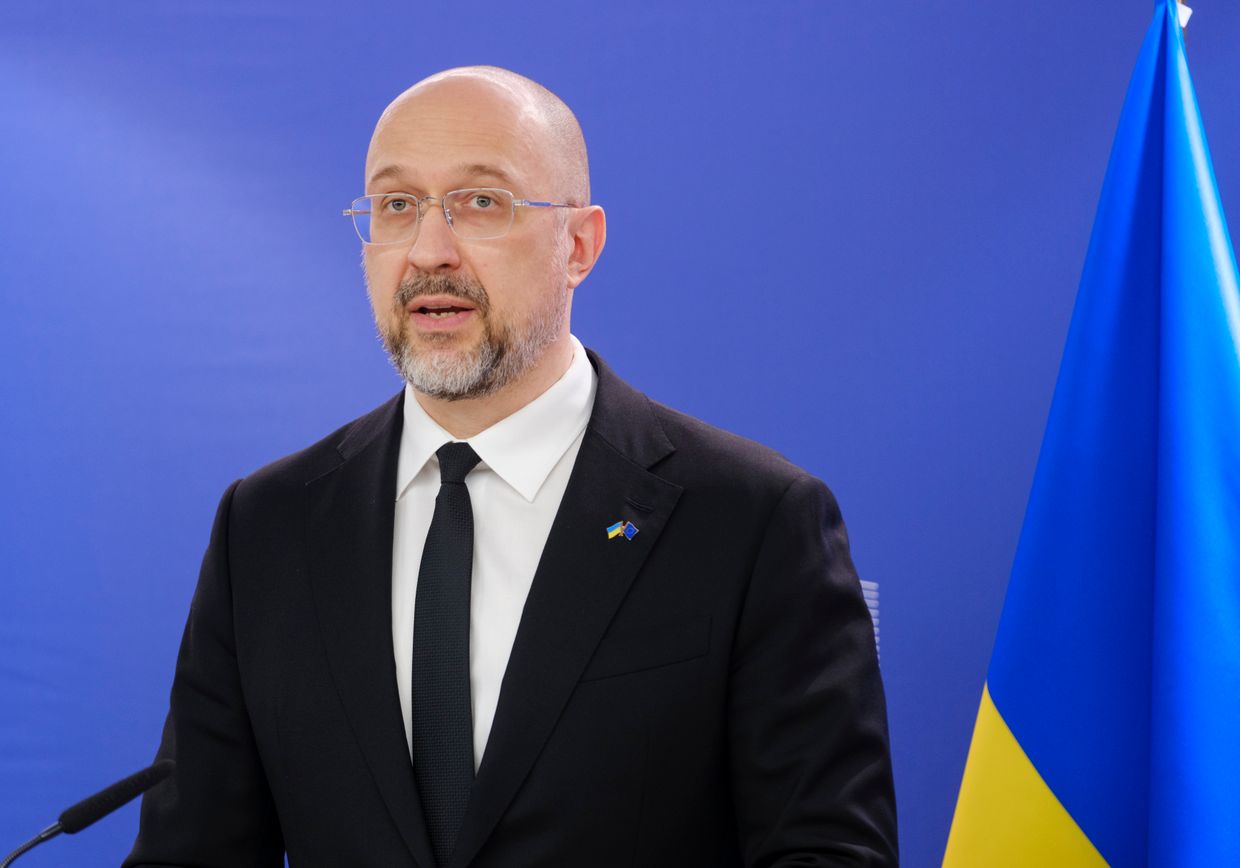Ukraine war latest: Deploying jets to protect Ukraine would lead to escalation, UK foreign secretary says

Key developments on April 15:
- Deploying jets to protect Ukraine would lead to escalation, UK foreign secretary says
- Source: Ukrainian forces hit command post in Russian-occupied Crimea
- Netherlands, Germany, Canada to send drones to Ukraine
- SBU: Ukraine's modernized sea drones can carry 1 ton of explosives over 1,000 kilometers away
- Minister: Ukraine allocates $6 billion for arms procurement in 2024
Deploying Western fighter jets to protect Ukraine from missile strikes, as was done for Israel on April 14, would lead to "dangerous escalation," U.K. Foreign Secretary David Cameron said on air on April 15.
Iran carried out a massive aerial attack on Israel on April 14 and launched 170 drones, 30 cruise missiles, and 120 ballistic missiles, according to Israel's Defense Forces (IDF).
Israel and its allies downed the vast majority of the drones and missiles before they even reached Israeli territory.
The U.K.'s Royal Air Force (RAF) downed "a number of drones" over the airspace of Iraq and Syria, Prime Minister Rishi Sunak confirmed.
Speaking live on LBC radio, Cameron said that the RAF could not defend Ukrainian airspace in the same way as "the one thing" that needs to be avoided is "NATO troops directly engaging with Russian troops."
Ukraine should be provided with support "in terms of money, and crucially in terms of weapons," but "actually putting NATO forces directly in conflict with Russian forces, I think that would be a dangerous escalation,' Cameron said.
When asked why the West cannot give Ukraine more direct help in shooting down drones, Cameron responded that "what Ukraine needs right now is not Western planes over their skies."
"What they desperately want and what we need to give them is more air defense systems," which are "more effective," Cameron argued.
Cameron pointed to Ukraine's urgent calls for more Patriot systems. President Volodymyr Zelensky said on April 6 that Ukraine needs 25 Patriots to protect the entire country from Russian attacks.
Foreign Minister Dmytro Kuleba said he is for now focused on securing seven to protect Ukraine's largest cities.
Germany announced on April 13 that it will provide Ukraine with one more Patriot air defense system to fend off increased Russian attacks.
Source: Ukrainian forces hit command post in Russian-occupied Crimea
Ukrainian forces on April 15 carried out a missile attack on a command post in Russian-occupied Crimea where top Russian offices were deployed, a military intelligence source told the Kyiv Independent.
The news came after explosions were reported in Crimea at noon local time. An air raid alert lasted for two hours.
The local partisan group Atesh said that the sounds of Russian air defense operating had been heard. Atesh claimed that the military base of the 810th Marine Brigade in Sevastopol had been hit.
Russian aircraft were also recorded taking off during the air raid alert, according to the Telegram channel Crimean Wind.
Russian proxies have not commented on the reported strike yet as of 6 p.m. local time.
In recent months, Ukraine has intensified its attacks on occupied Crimea, targeting Russian military assets in and around the Black Sea.
Navy spokesperson Dmytro Pletenchuk said on March 30 that Russia had withdrawn nearly all its major ships from ports in occupied Crimea following successful Ukrainian strikes.
Netherlands, Germany, Canada to send drones to Ukraine
Germany, the Netherlands, and Canada will supply Ukraine with drones, while Lithuania will allocate additional funds for first-person view (FPV) drone production, Ukraine's Defense Ministry reported on April 15 after a meeting of the countries' representatives.
The United Kingdom and Latvia co-lead the drone coalition, which was established in January to bolster Ukraine's drone arsenal. Seven countries, apart from the founding states, have joined the alliance, including Germany, Canada, the Netherlands, Lithuania, Sweden, Estonia, and Denmark.
Germany plans to provide Ukraine with Vector 211 reconnaissance drones without specifying the amount, according to the Defense Ministry's statement.
Canada, in turn, will send 450 SkyRanger multi-mission drones, while the Netherlands, in collaboration with Denmark and Germany, will supply Ukraine with Heidrun RQ-35 reconnaissance drones worth 200 million euros ($213 million).
Lithuania will also allocate 3 million euros ($3 million) for the Ukrainian FPV drone production.
"The situation on the front line changes every day, the enemy continues to attack civilian facilities, especially energy infrastructure," Deputy Defense Minister Kateryna Chernohorenko said during the meeting, adding that Ukraine needs "tools" to respond to these attacks.
"Time for discussion on the decisions is running out, we need it now," Chernohorenko said.
Latvian Defense Minister Andris Spruds said that the drone coalition is waiting for new members to join and support this initiative.
Latvia previously announced that it would deliver 1 million euros ($1.1 million) worth of drones to Ukraine "soon."
"Latvia also plans to continue helping Ukraine further, and we are preparing the next defense aid package this month," Latvian Prime Minister Evika Silina said on April 4.
SBU: Ukraine's modernized sea drones can carry 1 ton of explosives over 1,000 kilometers away
Ukrainian naval drones Sea Baby have been modernized and can now carry almost a ton of explosives to hit a target over 1,000 kilometers away, Artem Dekhtiarenko, the spokesperson of the Security Service of Ukraine (SBU), said on April 14.
"This means that the SBU can reach a target almost anywhere in the Black Sea," added Dekhtiarenko.
In recent months, Ukraine has intensified its attacks on occupied Crimea, targeting Russian military assets in and around the Black Sea with domestically-produced sea drones and long-range missiles. Russia has illegally occupied the peninsula since 2014.
As of early February 2024, 33% of the Russian Black Sea fleet's warships had been disabled by Ukraine, the Strategic Communications Center of Ukraine's Armed Forces recently reported.
The SBU currently uses two types of sea drones — Sea Baby and Mamai, Dekhtiarenko said on national television.
"These are already new generations of drones, on the improvement of which the team of SBU specialists worked and continues to work together with other members of the Security and Defense Forces."
The sea drones used by the SBU have so far hit 11 Russian warships and the Crimean bridge connecting the occupied peninsula with Russia, according to Dekhtiarenko.
Dekhtiarenko said that in 2022, when the SBU first started to use homegrown sea drones, there had been no alternative to these drones worldwide. The existing Western drones were large but not maneuverable, they could easily be detected by "enemy radar stations," and they also did not have a warhead, the spokesperson added.
"Today, a drone worth Hr 8.5 million (around $216,000) destroys an enemy warship worth tens of millions of dollars."
To prevent further Ukrainian drone strikes on the Black Sea fleet, Russian forces in occupied Crimea are constructing barriers at the entrance to Sevastopol Bay, the partisan group Atesh reported on March 27.
Russia is also trying to strengthen the defense of its Novorossiysk port, where Moscow had begun redeploying its Black Sea fleet from Sevastopol last year, the U.K. Defense Ministry said in its daily update on March 31.
Minister: Ukraine allocates $6 billion for arms procurement in 2024
Ukraine's $40 billion defense budget for this year includes $6 billion for arms procurement, Strategic Industries Minister Oleksandr Kamyshin told journalists on April 14, Interfax-Ukraine reported.
Kyiv aims to localize weapons production and intensify its efforts to ramp up domestic manufacture of drones, a critical tool on the battlefield, amid rising uncertainty surrounding military aid from the U.S.
In late December last year, President Volodymyr Zelensky said that Ukraine had tripled its domestic production of equipment and weapons in 2023 compared to the year before.
According to Kamyshin, $30 billion of the total amount has been allocated for payments to the military in 2024. Another part will be spent on fuel and clothes for soldiers.
"This is the sum ($6 billion) that we have in contracts for our manufacturers, primarily Ukrainian ones, and it is very little, as our production capacity is three times greater," Kamyshin said.
Kyiv is currently negotiating with foreign partners to purchase Ukrainian military items at their expense and then transfer them to the country's armed forces, according to the minister.
Ukraine is ready to cover its needs with its own production in some areas, including armored vehicles, unmanned systems of all types, and artillery systems, added Kamyshin.
Ukraine has agreements on joint defense production with a number of countries, including the U.S. In December 2023, Kyiv and Washington signed a statement of intent on the co-production of weapons.
The agreement between the two nations will reportedly contribute to the construction of production facilities in Ukraine to supply the military with arms, in particular air defense equipment and ammunition, as well as repair and maintenance services.
















